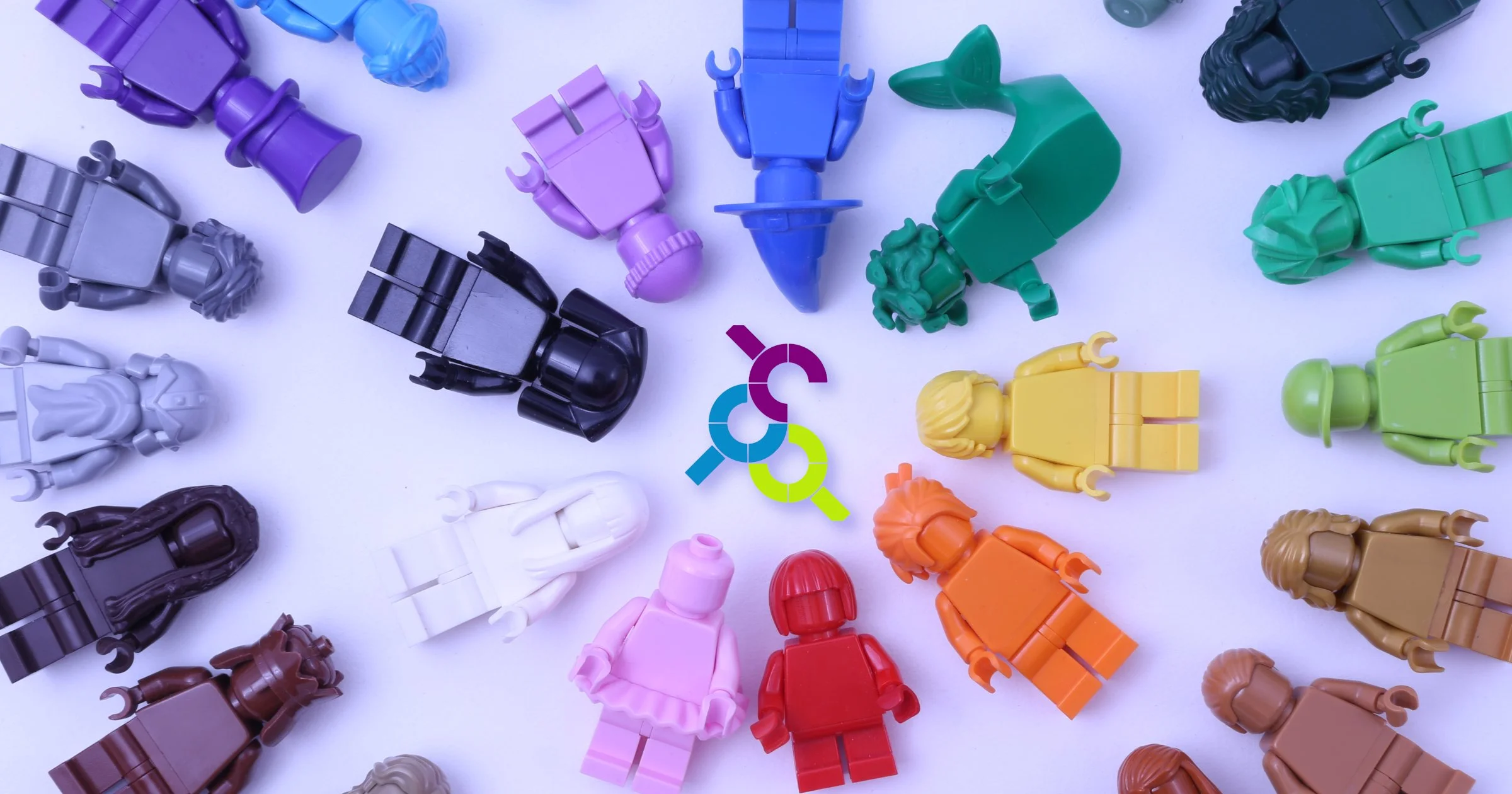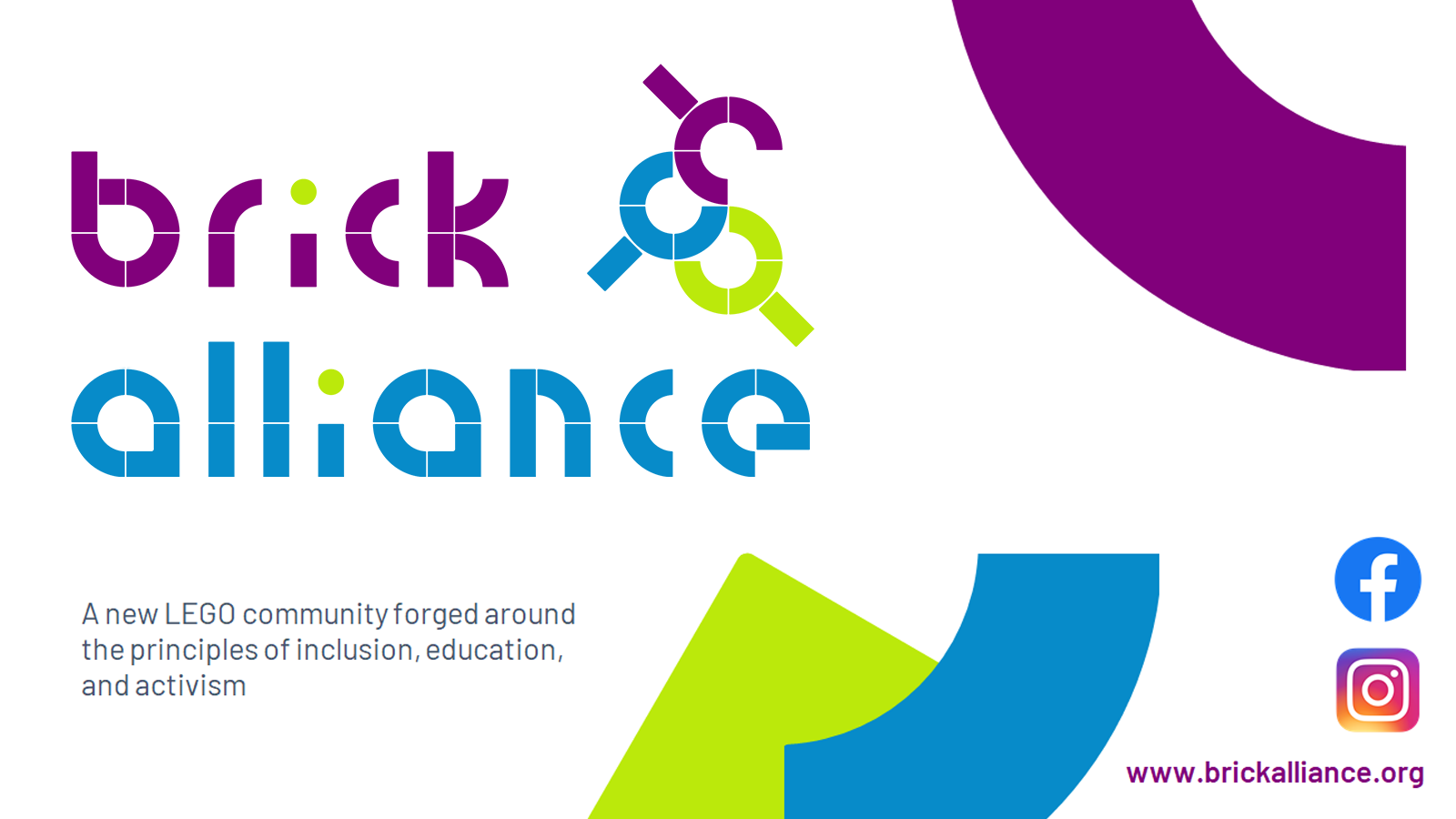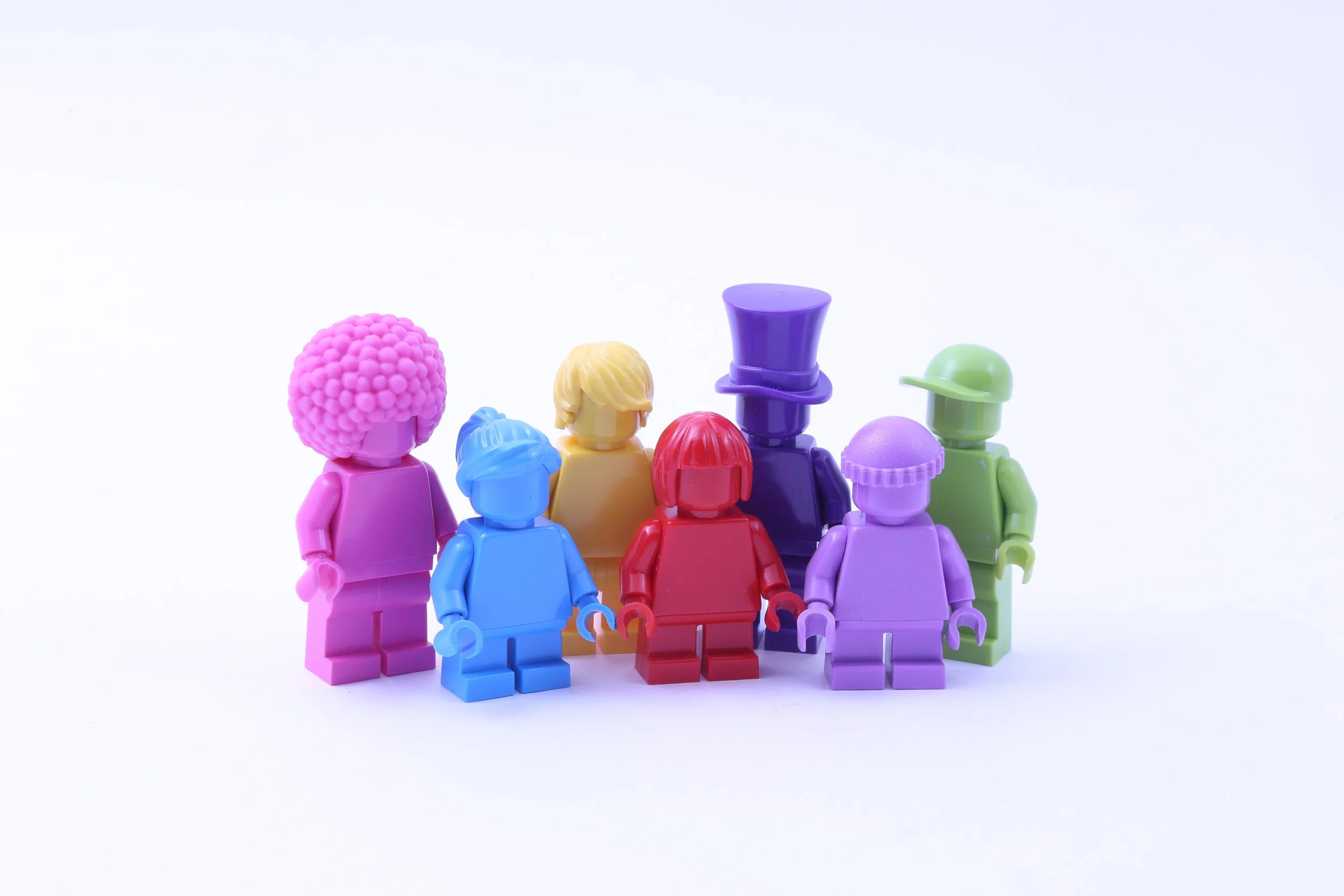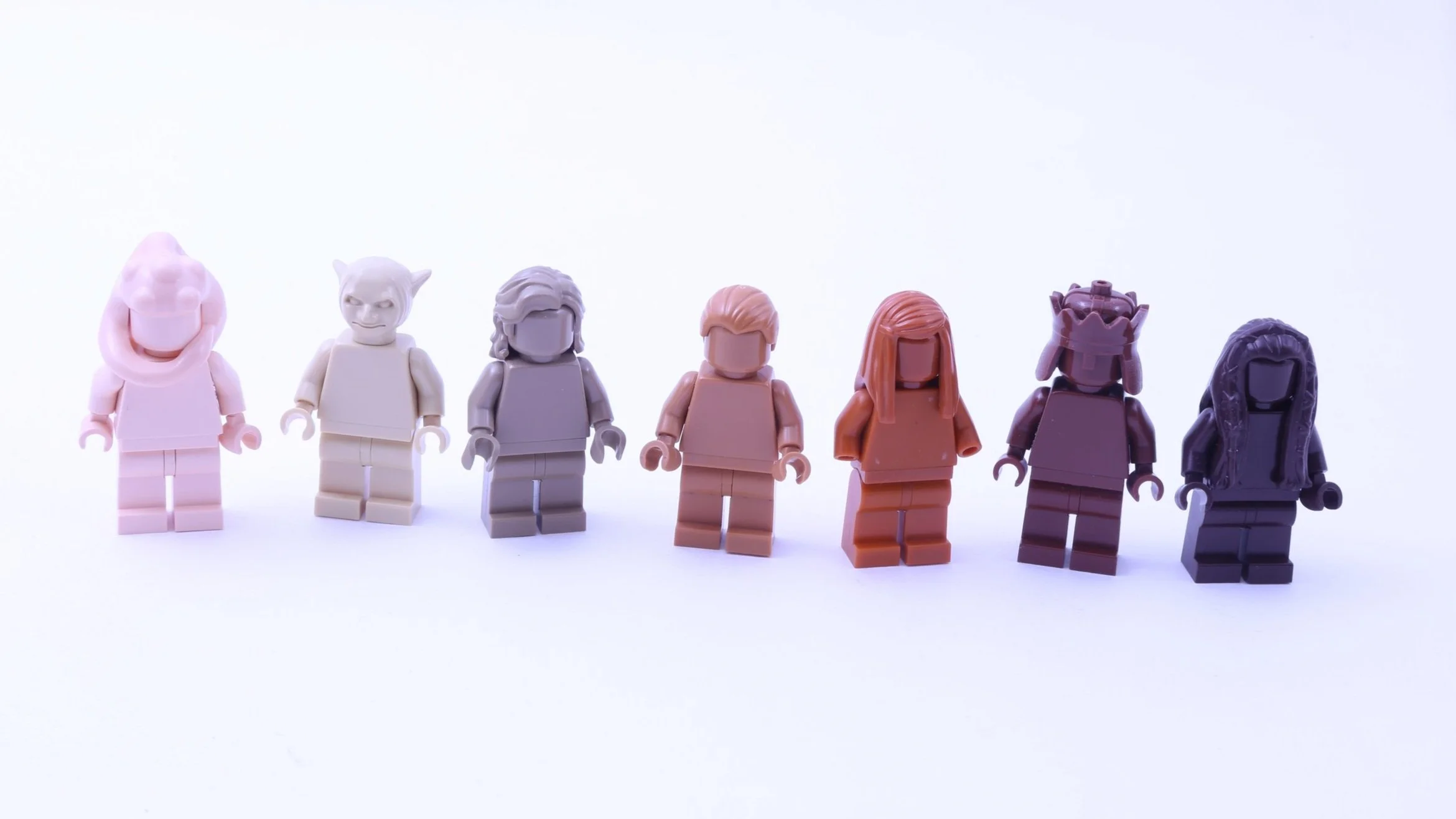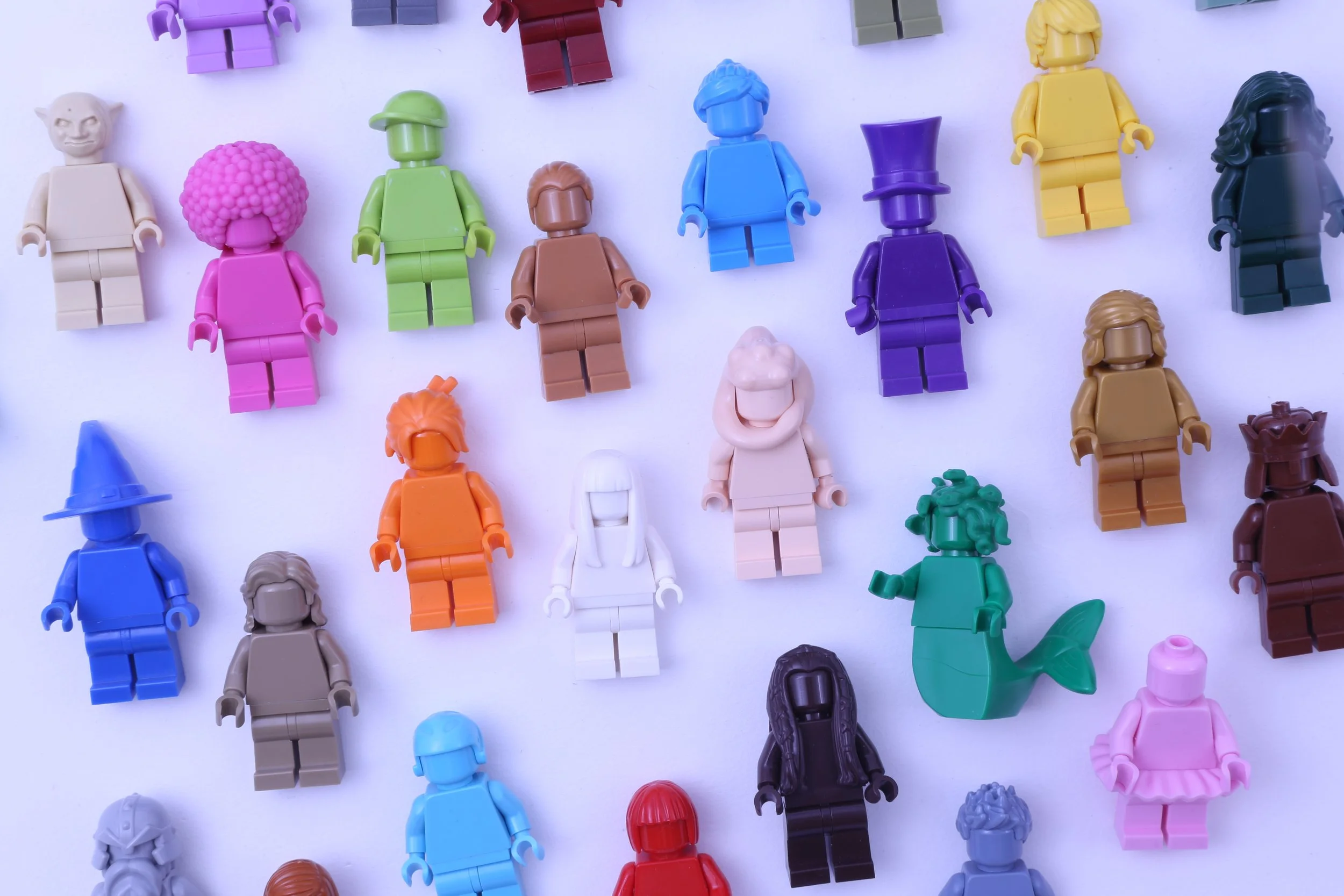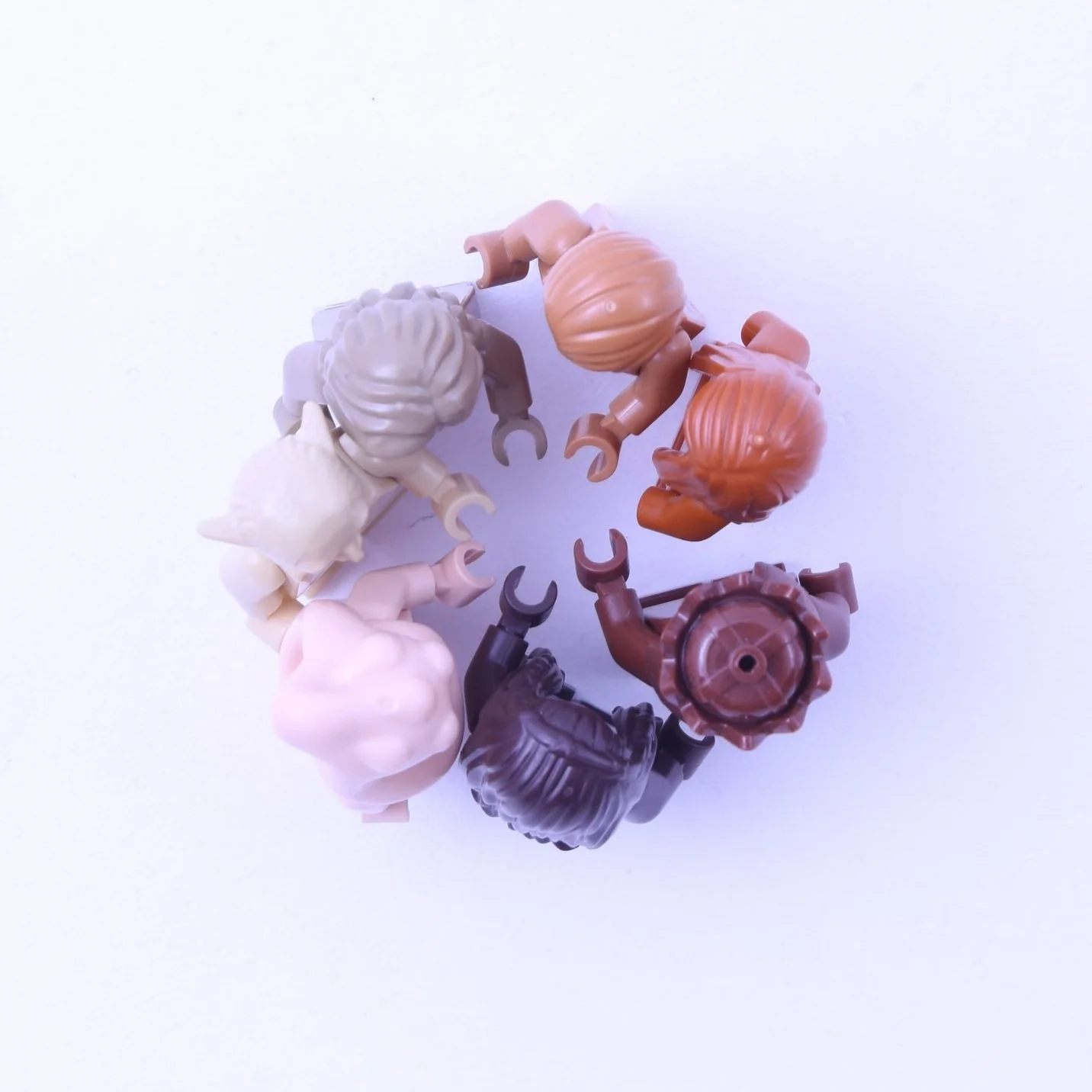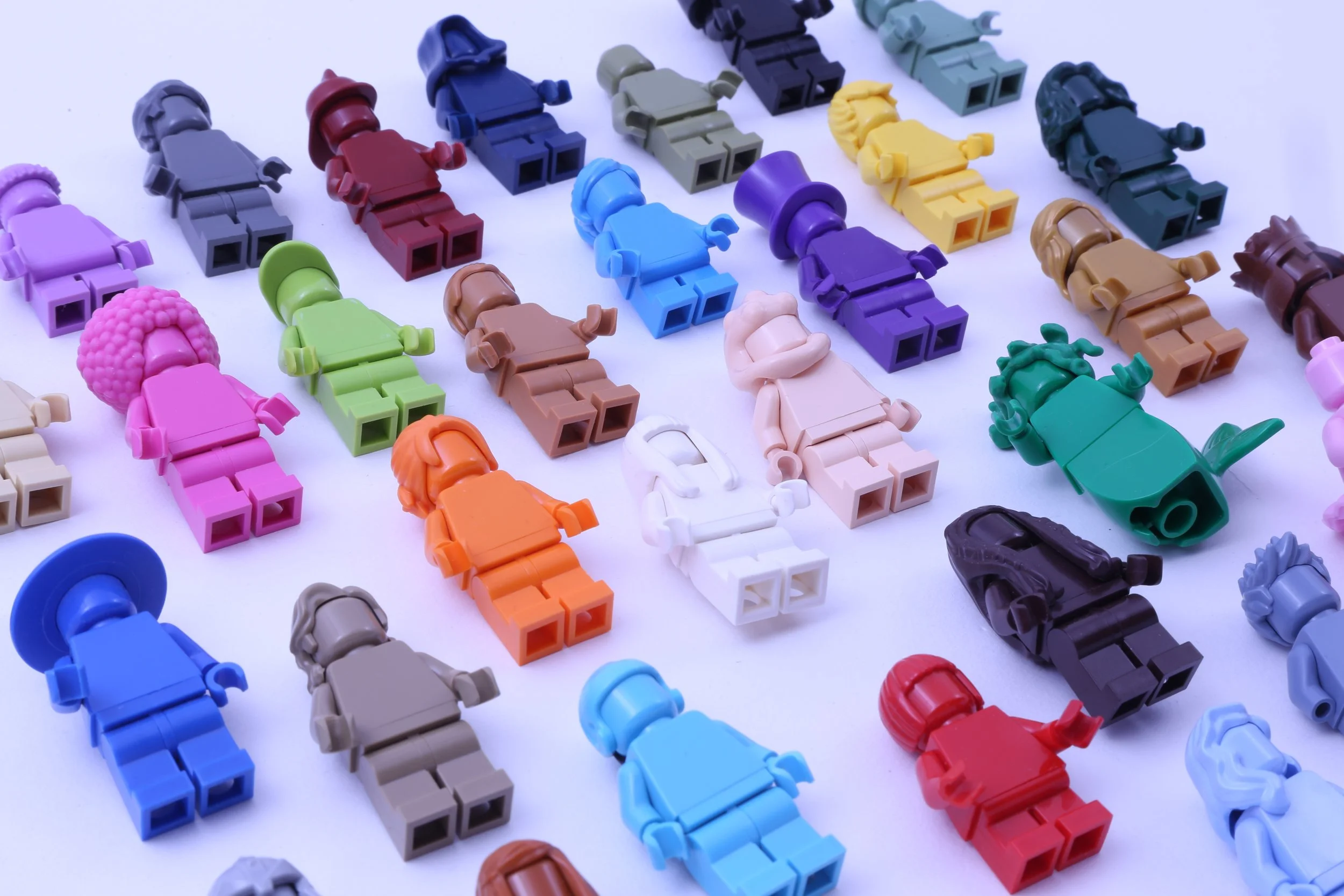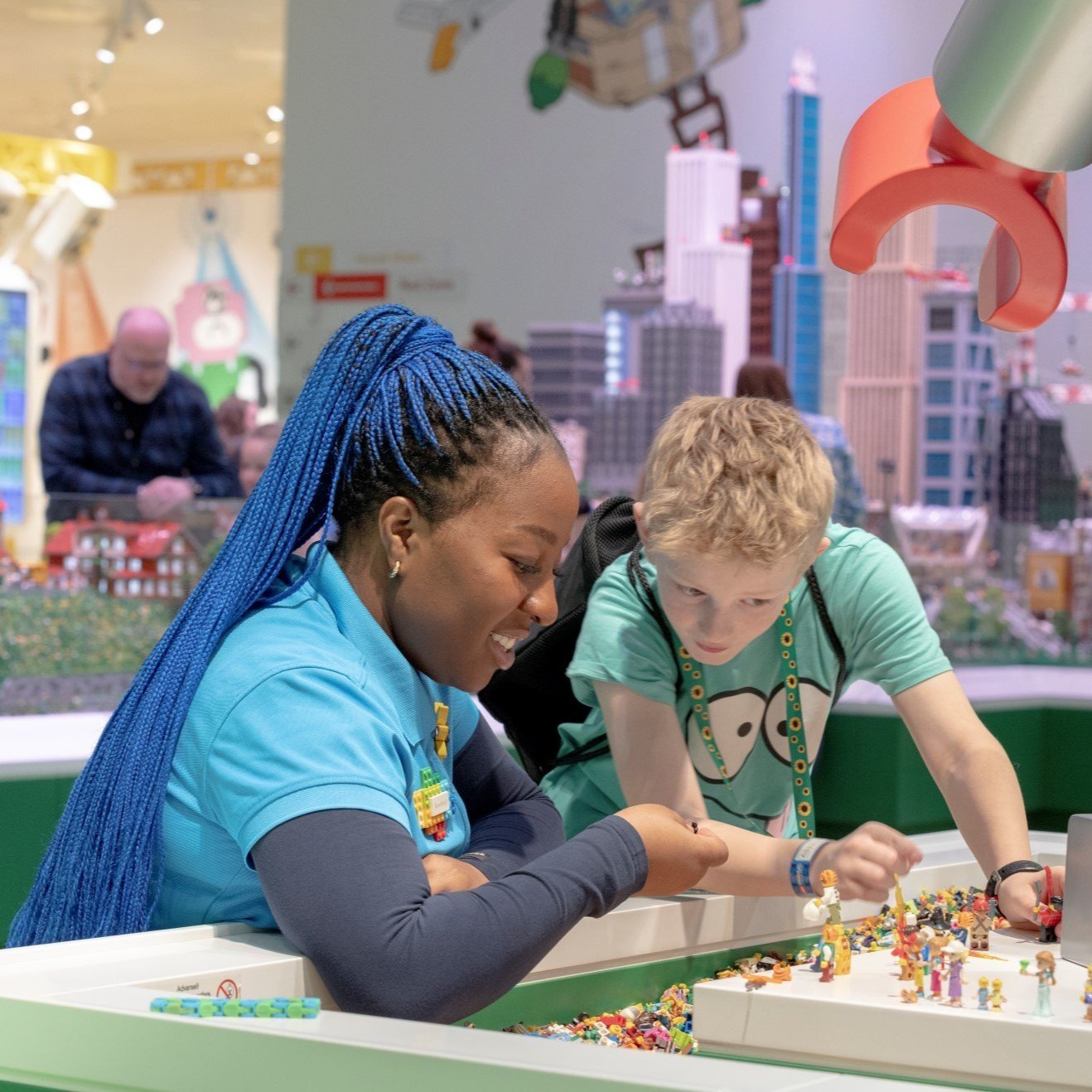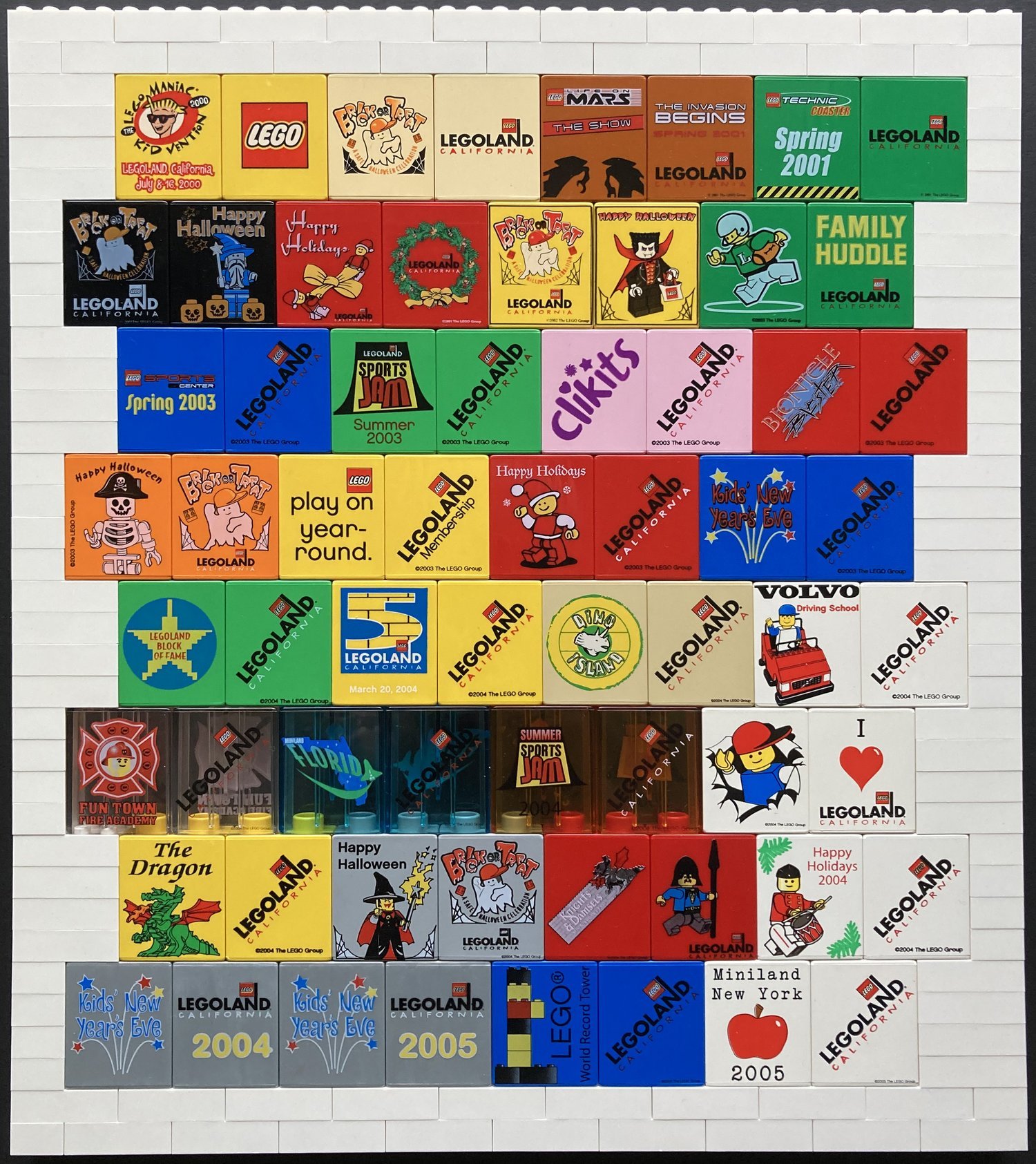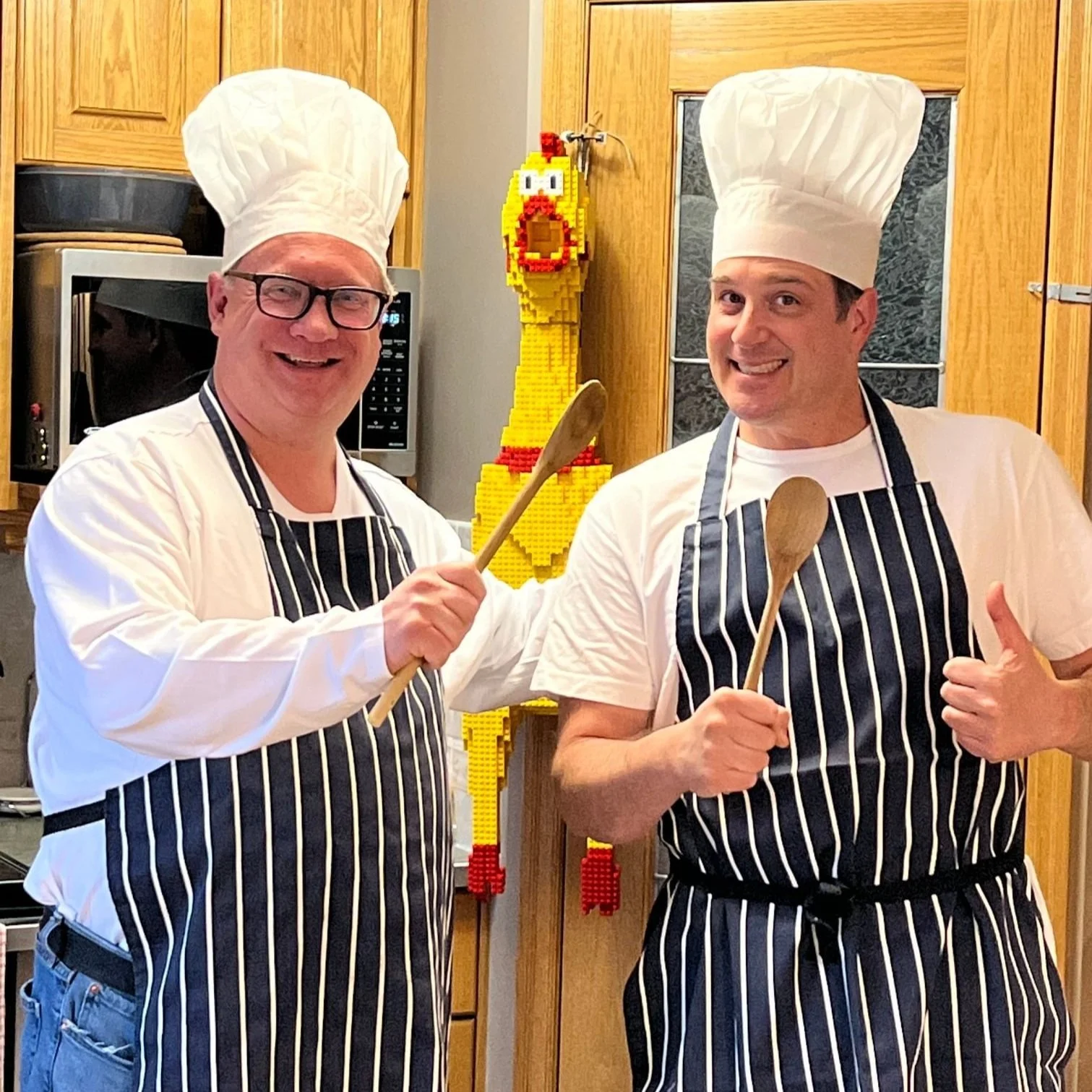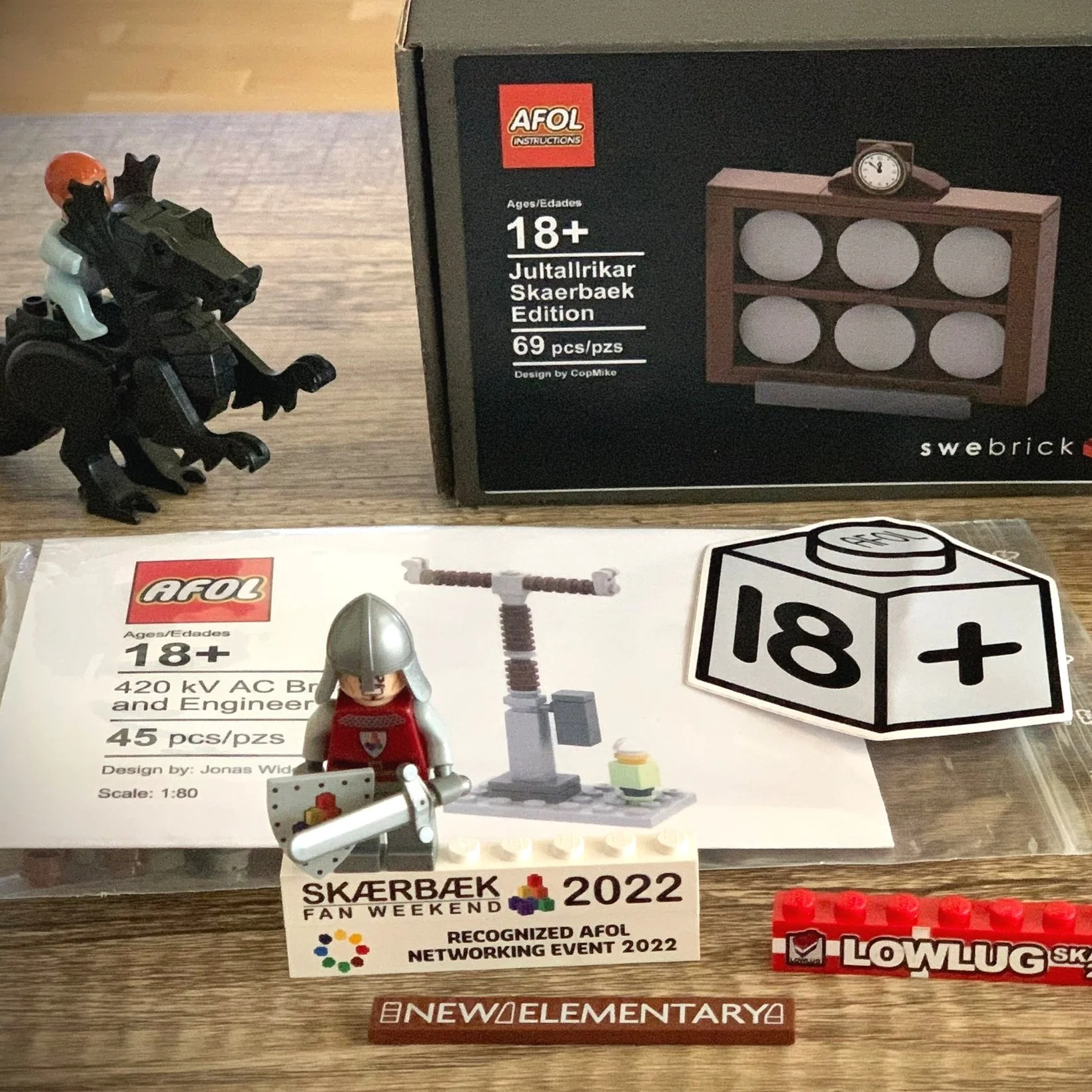Behind the Brick Alliance: A Conversation About Diversity and Inclusion
/Last month, a group of dedicated LEGO fans created the Brick Alliance, an organization working to help make the AFOL community more diverse, inclusive, and welcoming. Today, we have the opportunity to chat with advisory member Barbara Hoel about the new advocacy group. In this foundational interview, we’ll discuss what the Brick Alliance hopes to accomplish, how LEGO and the fan community can improve in relation to diversity and inclusiveness, and why representation is important.
All images and logos were provided by the Brick Alliance.
Dave: Thanks for taking the time to chat with BrickNerd about the Brick Alliance. Before we dive into the organization, would you like to give us a little background about yourself?
Barbara: My name is Barbara Hoel and I would like to acknowledge that I live in Wisconsin, USA on ancestral land of the Ho-Chunk Nation, who have called this land Teejop (day-JOPE) since time immemorial. Today I’m speaking on behalf of the Brick Alliance as an advisory member.
Growing up in a large family that moved frequently, LEGO was a perfect toy. Five kids could share the annual Christmas gift of LEGO and it could be all thrown in a box for the next move. It was the one constant we always had while growing up. I always kept a small collection of LEGO with me, even in college but didn’t have enough for large-scale building until I was given the huge box of our childhood LEGO collection from my parents.
Dave: LEGO can certainly feel like a luxury in that kind of situation. I’m curious what got you interested in diversity and inclusion.
Barbara: My family moved a great deal. We lived in rural Indiana, Los Angeles California, the inner city, the suburbs. We were homeless, we were middle class, we were in the minority, we were in the majority. Through it all, my mother was generous and welcoming to everyone around us and taught us to include all in our lives, no matter how different their experiences, lifestyle or living situation. She also taught us to draw on our own experiences and view others with kindness and understanding. She would never let us talk badly about anyone and she herself would step up to defend anyone who was being mistreated or talked about unkindly. I have spent my adult life trying to live up to her example.
Dave: What an impactful legacy to live up to, even amidst the neverending changes. I can see why getting involved in the Brick Alliance is important to you. For our readers who may not be aware, what is the Brick Alliance?
Barbara: Brick Alliance is an organization created to support groups within the AFOL ecosystem that were created in reaction to negative experiences – including harassment, lack of inclusion, under-representation, and safety issues.
Dave: What do you hope to accomplish with the organization? Can you paint a picture for us?
Barbara: We would like it to be socially unacceptable to harass or make fun of anyone in the AFOL community. We would like to see a variety of faces in every convention photo. We would like to see LEGO sets reflect the wide diversity that is the AFOL community.
Dave: Where did the idea for Brick Alliance originally come from? When it launched in November 2021 reaction seemed fairly positive.
Barbara: Initially, The Women’s Brick Initiative and GayFOLs founders met to discuss how they could support each other – they both had similar goals and realised they could do more together than apart. I didn’t know about this meeting but was aware that the Women’s Brick Initiative was collecting data on the availability of diverse skin-toned minifigures. I contacted the Women’s Brick Initiative on behalf of Tips&Bricks and the rest is history.
Dave: That is certainly quite an impressive list of advocacy groups. How did the name “Brick Alliance” come about?
Barbara: It was a group discussion among founding members. We wanted a name that implied we were about bringing groups and people together and that we were allies.
Dave: Why is bringing people together and diversity and inclusion so important within the LEGO hobby?
Barbara: It is important everywhere, but we wanted to address it in this community because LEGO is a narrative hobby that reflects the real world. LEGO is also the biggest toy company in the world, reaching more households than any other. With that level of market saturation, it is important that LEGO be as inclusive and representative of the diversity of people as much as is possible. By the same token, the AFOL community represents the product as well and should embrace those values.
Dave: With their global reach that you mentioned, what is LEGO doing well in terms of diversity and inclusion? What can they do better?
Barbara: LEGO is doing well listening and learning from the AFOL community. We have first-hand experience of LEGO actively listening and making changes. This can be seen in more inclusive and diverse advertising, the introduction of minifigures with disabilities, and efforts to change how stores present the LEGO sets to the public. For improvement, first and foremost, we want LEGO to make skin-toned minifigures for non-licensed sets that are affordable for all households.
Dave: I suspect that change comes more slowly than you might hope for from LEGO, but it is good to hear LEGO is receptive to your mission. How does the Brick Alliance measure how LEGO is improving in these areas?
Barbara: As an organization, we will be setting goals such as gender equality in minifigures. For me personally, it is the price point. Can you find a variety of sets in the $20 and under price range with diverse minifigures, with different abilities, gender coding and ages? When diversity is as commonplace in LEGO system sets as it is in Duplo, then I will be satisfied.
Dave: I agree, an affordable “colors of the world” minifigure pack or series would be wonderful. As you look into areas for advocacy, what groups are under-represented in the AFOL community?
Barbara: I would say “under-recognized” rather than “under-represented” when it comes to the AFOL community. The AFOL community is about celebrating and sharing AFOLs’ enthusiasm for LEGO and their creativity with the product. However, women, LGBTQ+, IPOC (Indigenous and People of Color), neurodiverse people, people with disabilities and people with limited finances are harassed and belittled for their ideas and experiences – whether in regards to MOCs they have created, questions they ask or life experiences they share.
Dave: I’ve unfortunately witnessed some of that backlash in the AFOL community and am personally glad the Brick Alliance is attempting to change things. Why do you think diversity and inclusion are seemingly such hard subjects to tackle?
Barbara: I don’t think it’s a hard topic to tackle so much as it’s a topic that is frequently attacked or disregarded when brought up in communities. The majority of feedback is positive for our efforts to build the AFOL community through diversity and inclusion. But the people who don’t want to talk about it make a lot of noise to try and drown out the learning opportunities – this adds to the problem rather than shutting it down or changing the subject. From my experience with Tips&Bricks, this is only a small amount of people, but they often shout the loudest.
Dave: Has the Brick Alliance experienced any push-back?
Barbara: Yes, the typical complaint is that people use LEGO to escape the real world and that by talking about ‘politics’, we are ruining their experience. But the response to that is that not everyone can escape the real world when they engage with LEGO building. The ones who can do so are because they feel comfortable and see themselves within the context of those in the community and the sets and MOCs displayed. Others are constantly searching for a reflection of themselves within the hobby they love or do not feel welcome for multiple reasons.
Dave: How do you increase diversity within the hobby when the price of LEGO itself can be a deterrent for many?
Barbara: We think this question describes two separate issues. Diversity and financial position are intersected but not implicit. The question itself implies that only white people are wealthy enough to buy LEGO and that therefore leads to poor diversity in the community, when in fact, there are middle-class families of all races. The deterrent is that LEGO sets don’t reflect enough diversity and the proof for this is that more girls wanted sets when sets that reflected their interests were introduced. If City sets were diverse instead of all yellow, they would likely be bought by more people as well. No matter someone’s financial position, they will not buy LEGO if the sets do not reflect themselves. Price is an issue, but it’s a separate one to getting more people of colour into the hobby.
Dave: What barriers of entry are there for LEGO and how can they be overcome?
Barbara: Besides the lack of diversity in sets, you are correct with the issue of cost. Having more sets that are under $10 would make LEGO available to most households. We noticed that the 2022 Disney Princess line features sets with multiple princesses in one, which means you have to buy a more expensive set if you just want one of the characters – we wish they could have all been smaller sets focusing on one character. Also, it would be nice if LEGO made a wider variety of polybag sets as these are the least expensive sets available and an excellent entry point to get your hands on bricks.
Dave: Along with these recommendations, how are you working with LEGO to help increase diversity and inclusion?
Barbara: We are fortunate to be connected with LEGO through contacts we have gained through some of our members being part of the LEGO Ambassador Network (LAN). So far, we have had two meetings with them via Zoom since our start in 2020 and have a third meeting scheduled for early 2022. The first meeting was sharing what Brick Alliance is and what we plan to do, and the second we talked about the pressing issue of safety in the community by sharing our research, community feedback and personal experiences. We want to make sure we have a positive working relationship with LEGO where we can work with them instead of against them, so we always share ideas and offer solutions to the problems we discuss.
Dave: Are they receptive to your messages?
Barbara: We think they are. They have told us that they have made changes as direct responses to conversations they’ve had with us, for example encouraging more conversation around diversity and inclusion topics on the LAN. They have also expressed interest in hearing our ideas for making their products more inclusive. The fact they are making time to meet with us more frequently and follow up with questions and ideas is a very good sign.
Dave: What can the fan community do in terms of inclusion and diversity that LEGO cannot?
Barbara: The fan community is everywhere – we can be reaching out and helping one another at all times. Ultimately, the fan community is shaped by the fans themselves. The community is everywhere and if we want to make it a better, more inclusive space, we have to take action on an individual level, such as intentionally using a range of skin tone minifigures in MOCs, and openly discussing diversity and inclusion when new sets come out. Another way is to share their own culture, tradition and holidays through LEGO and encourage others to do the same.
For LEGO User Groups and Online Communities, just saying everyone is welcome is not enough for everyone to feel welcome – it’s the individuals leading the groups that make conscious decisions, such as reaching out to marginalised groups and having zero tolerance about any kind of discrimination. LEGO Fan Media can also join the effort by looking at LEGO products and news with a diversity and inclusion lens, making sure their teams are diverse and featuring content from a wide variety of builders and cultures.
Dave: Those are a lot of simple things that we all can do to help everyone feel more welcome in the LEGO hobby. I especially agree with you about showcasing a wide variety of cultures and voices – it is one of our driving ideals here at BrickNerd. I’m curious, what are the biggest challenges you face at the moment?
Barbara: Time and people power. We have a lot of ideas but we first have had to complete a lot of initial organization-building tasks We are already starting to address these as we are bringing on more board and advisory members in the new year and by then we should have all of our set-up out of the way so we can begin carrying out our ideas.
Dave: Tell us a little bit about the leadership team you’ve assembled from the community. Two BrickNerd contributors (Inez Vasquez and Simon Liu) are founding members of the Brick Alliance as well as several of our patrons.
Barbara: Our leadership team is currently made up of five board members and eight advisory members. We have representation from a wide variety of equity groups and countries. We reach out for input to make sure we are not just speaking for the community but working with the community.
Dave: How did you recruit your current membership?
Barbara: Initially we recruited two ways. Putting out the word on the LEGO Ambassador Network that we were forming the Brick Alliance and by having conversations with individuals who were already involved in communities like the Women’s Brick Initiative, GayFOLs and Tips&Bricks. Recently, with the launch of the Brick Alliance website, we have an application form that people can use to become a board or advisory member. We will be introducing new members early next year from this first pool of applications.
Dave: For those who might be interested in joining, what is a Brick Alliance meeting like?
Barbara: Currently, we have meetings four times a month – two for general business and two for projects. We have them at various times so that members from different regions of the world can find a meeting that fits their schedule as best as possible. The meetings themselves always include interesting discussions with everyone bringing a different perspective to various topics. Few of us have ever actually met in person but we have become good friends in the process of creating Brick Alliance. We take time in the meetings for personal interaction, not just business. We recognize we are all human and volunteers and treat each other with kindness and understanding.
Dave: How does the group coordinate and what do your general business and topic discussions entail?
Barbara: We have an agenda for each meeting – our board member Alex Johnson uses his project management skills to keep us organized for each meeting when we have so many projects and tasks to complete. We also use Trello for tracking our progress and following up on assigned tasks. IN terms of general business, we are currently working on what is needed to create the tools and applications needed for the wider AFOL community to participate in Brick Alliance projects. Getting our website up and running was a big part of our 2020 meetings. We are planning on launching multiple Brick Alliance research and community projects, as well as the Brick Alliance newsletter in January 2022. In meetings we also discuss recent LEGO news, looking at things through a diversity and inclusion lens – it is interesting to hear different perspectives on things.
Dave: How are you raising awareness of the group? Are you planning any events in the future?
Barbara: We are raising awareness through a variety of methods: social media posts, the LAN, word of mouth. In 2020, we hosted two discussion groups during the fall and winter Virtual Brickworlds. We plan to do in-person events in 2022. So far, we plan to officially be part of four conventions in 2022, BrickCan in Vancouver Canada, Brickworld in Chicago US, Skaerbaek in Denmark and BrickCon in Seattle US. In addition to workshops, discussion panels and display booths, we will be doing ThoughtExchange surveys where we can get real-time feedback on what the AFOL community is thinking regarding projects, issues and events.
Dave: Thank you so much for your time and thoughtful responses about the Brick Alliance. Is there anything else you would like to share with us?
Barbara: We hope that Brick Alliance will be a unifying organization that joins together other organizations and individuals who want to be part of a greater, more inclusive and diverse AFOL ecosystem. Our hope is that anyone seeing that the Brick Alliance will be present at an event means that they will be welcome and safe to participate.
Dave: I personally look forward to seeing that happen! Is there anything in the immediate future for the Brick Alliance that we should keep an eye out for?
Barbara: Lots! In the new year, we will be announcing many things: new members, 2022 projects and much more. One teaser is that we are planning to organise a participatory project during 2022 that we hope will be interesting, fun and informative, and won’t require in-person meetings. We will share more in January!
If you’d like more information about Brick Alliance, you can visit their website or follow them on Instagram and Facebook. If you’d like to participate in the conversation, you can also join their Facebook discussion group.
How have you helped the LEGO community be more welcoming to everyone? Let us know in the comments below.
Do you want to help BrickNerd continue publishing articles like this one? Become a top patron like Charlie Stephens, Marc & Liz Puleo, Paige Mueller, Rob Klingberg from Brickstuff, John & Joshua Hanlon from Beyond the Brick, and Megan Lum to show your support, get early access, exclusive swag and more.

